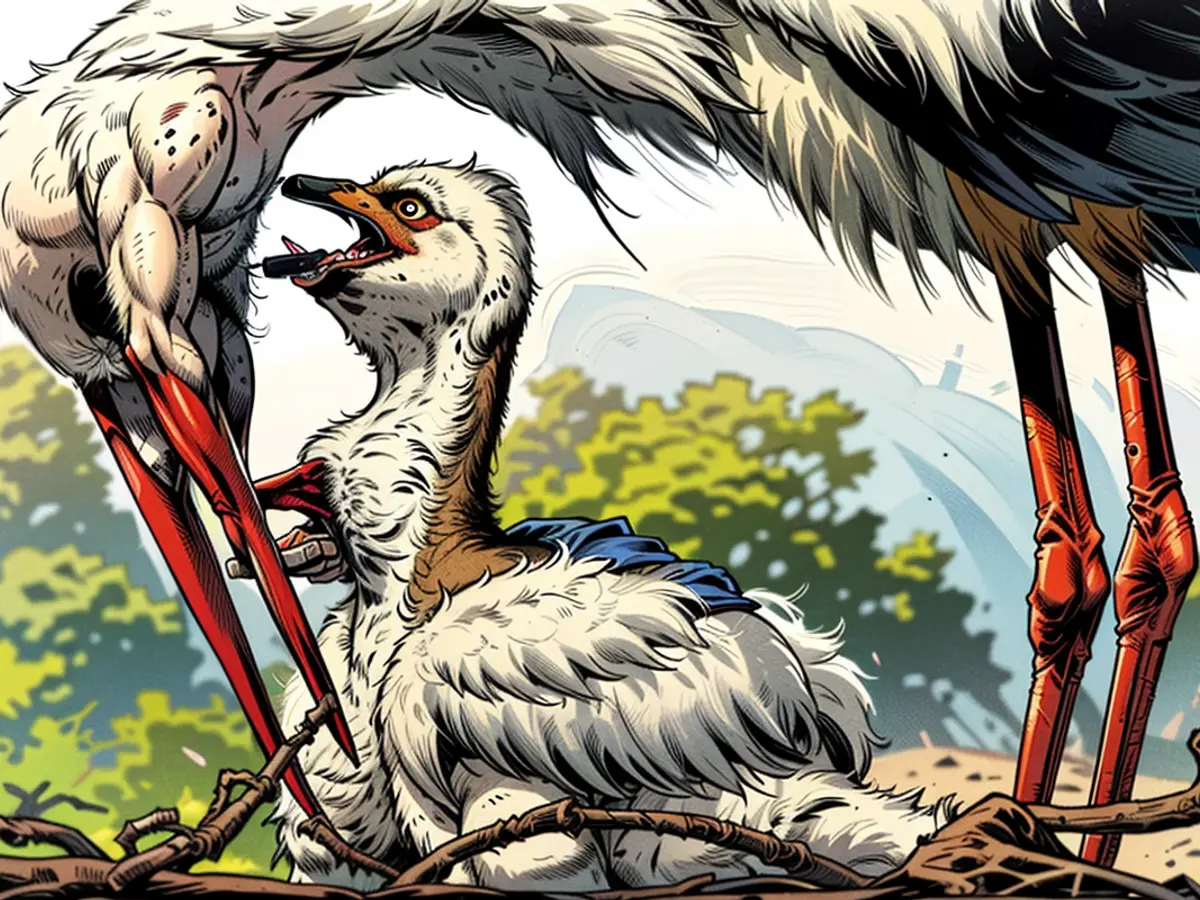Storks with GPS backpack - Hamburg's young storks will fly out soon - six with antennae
When everything goes well, eleven Storks will soon send signals from their roosting site. In the past few days, six young storks living in Hamburg have been equipped with GPS transmitters. "We managed to attach all six transmitters to the storks in two days with eight hours of heavy work", said Hamburg stork expert Jürgen Pelch to the German Press Agency. A farmer in the region lent a hand for the action, as the storks do not fear tractors. On the contrary, they hope for food. "Up to 15 storks ran beside and behind the large tractor", said Pelch about that. The team threw a capture net from the tractor, quickly caught the storks, and released them again - all within about ten minutes. "All storks have survived it well."
Twelve storks were already equipped with small GPS transmitters in 2019 and 2020. However, only five of them have been sending signals to the internet lately. The additional weight had no negative effects on the storks, as the GPS sender weighed at most ten grams.
The animal data of the animals are also scientifically evaluated by the University of Kiel, for example, to minimize the many dangers on the way to the south. A sender costs Pelch approximately between 2000 and 2500 Euro. The funding comes from Nabu Hamburg.
Record year for the storks in Hamburg
2024 was a record year for the storks in Hamburg - there were 113 stork chicks in the nests in June. And there could have been even more - but about 20 to 30 chicks had frozen to death due to the rainy and cold weather. However, the development of the storks in Hamburg's south is still positive. "We have received ten new pairs. The numbers are really good. That's a record since before the war." Hamburg is the German city with the most stork nests.
Old storks fly three to four weeks later
In the next one to two weeks, the young ones will embark on their journey to the south. Already now, the first birds are gathering in Altengamme for the communal flight. "They always start three to four weeks before the old storks." The older birds have to fatten themselves up again after the breeding season before they can make the long flight to the south.
Flight routes of the tagged birds
The GPS transmitters used on the storks are funded by Nabu Hamburg, a part of the Nature Protection League Germany. Using the data from these transmitters, the German Press Agency can track the flight routes of these tagged storks, providing valuable insights into their migration patterns. The University of Kiel also analyzes this data to ensure the safety of these migratory birds during their journey.








